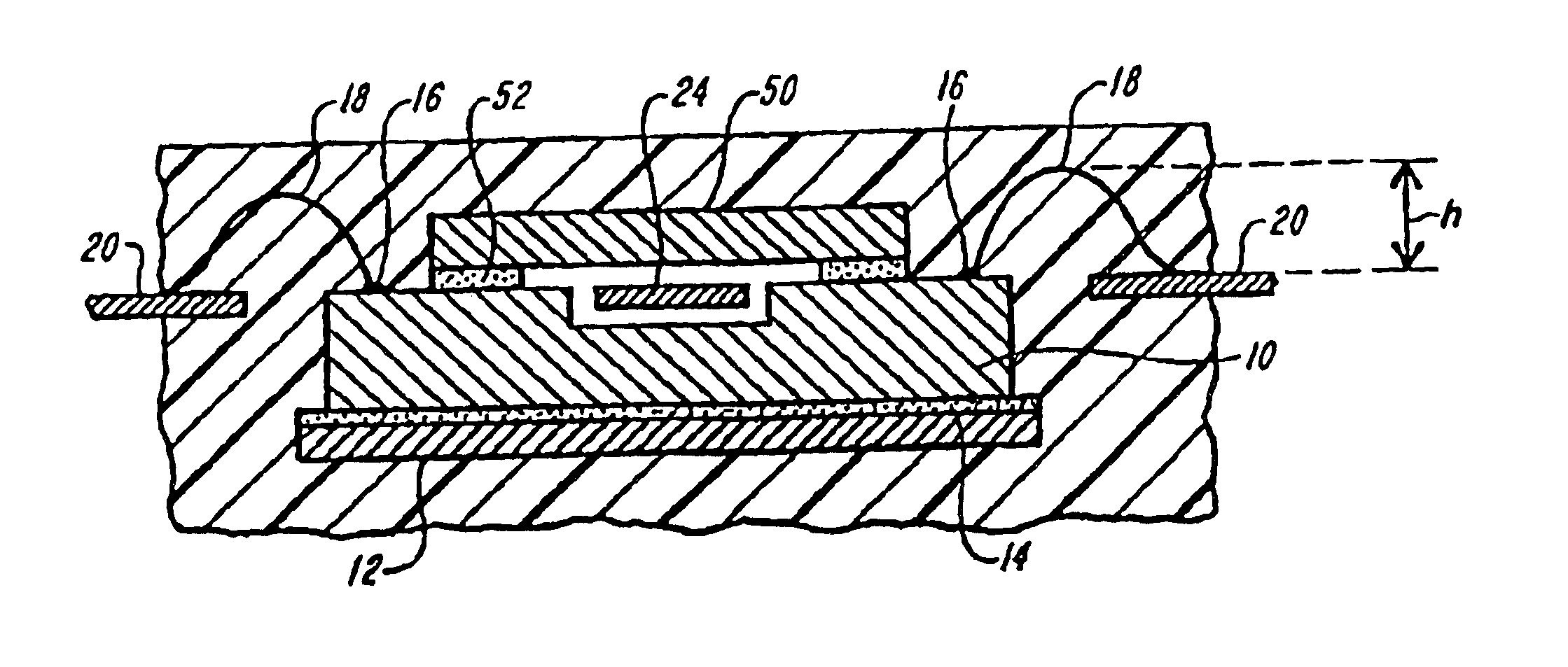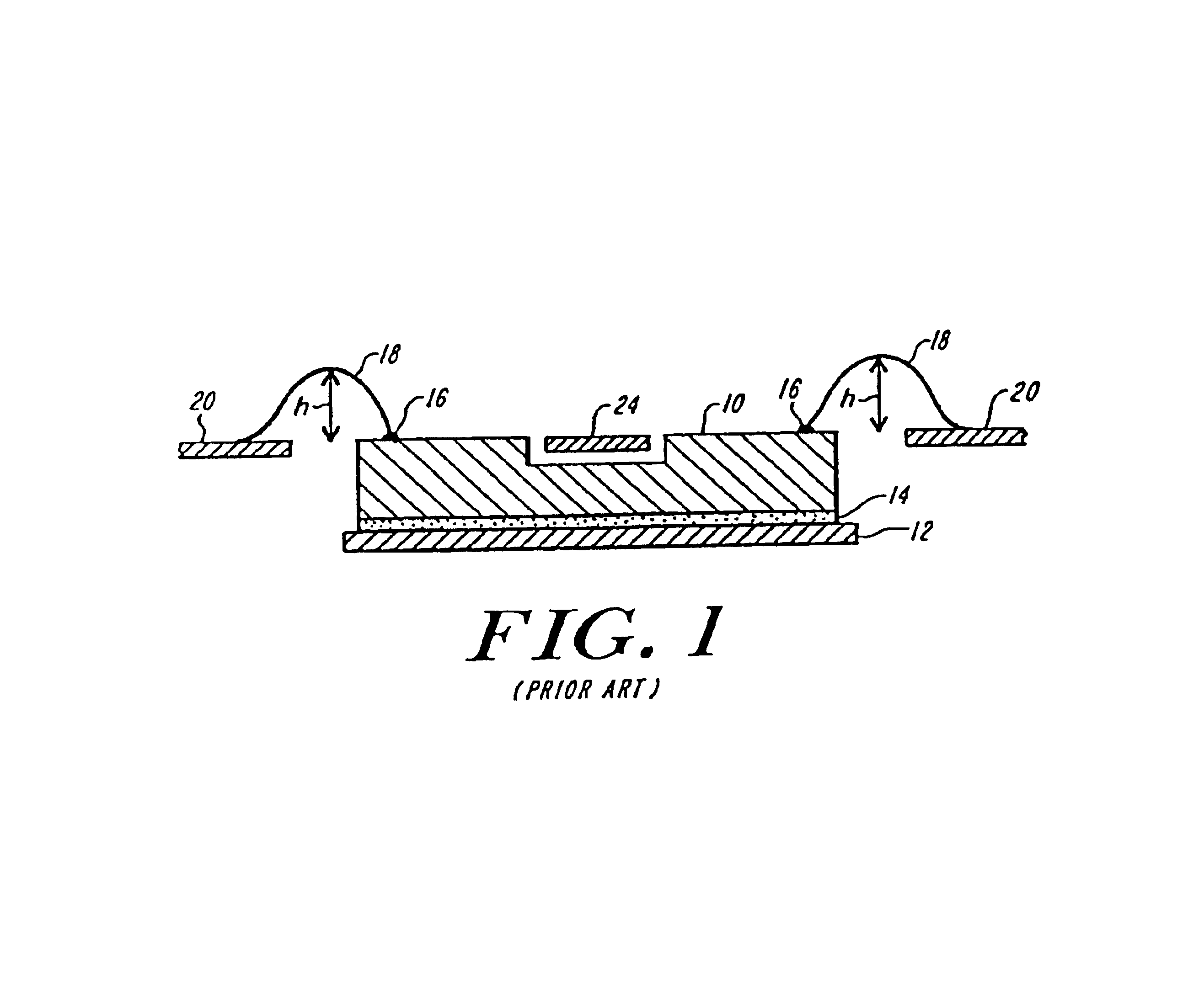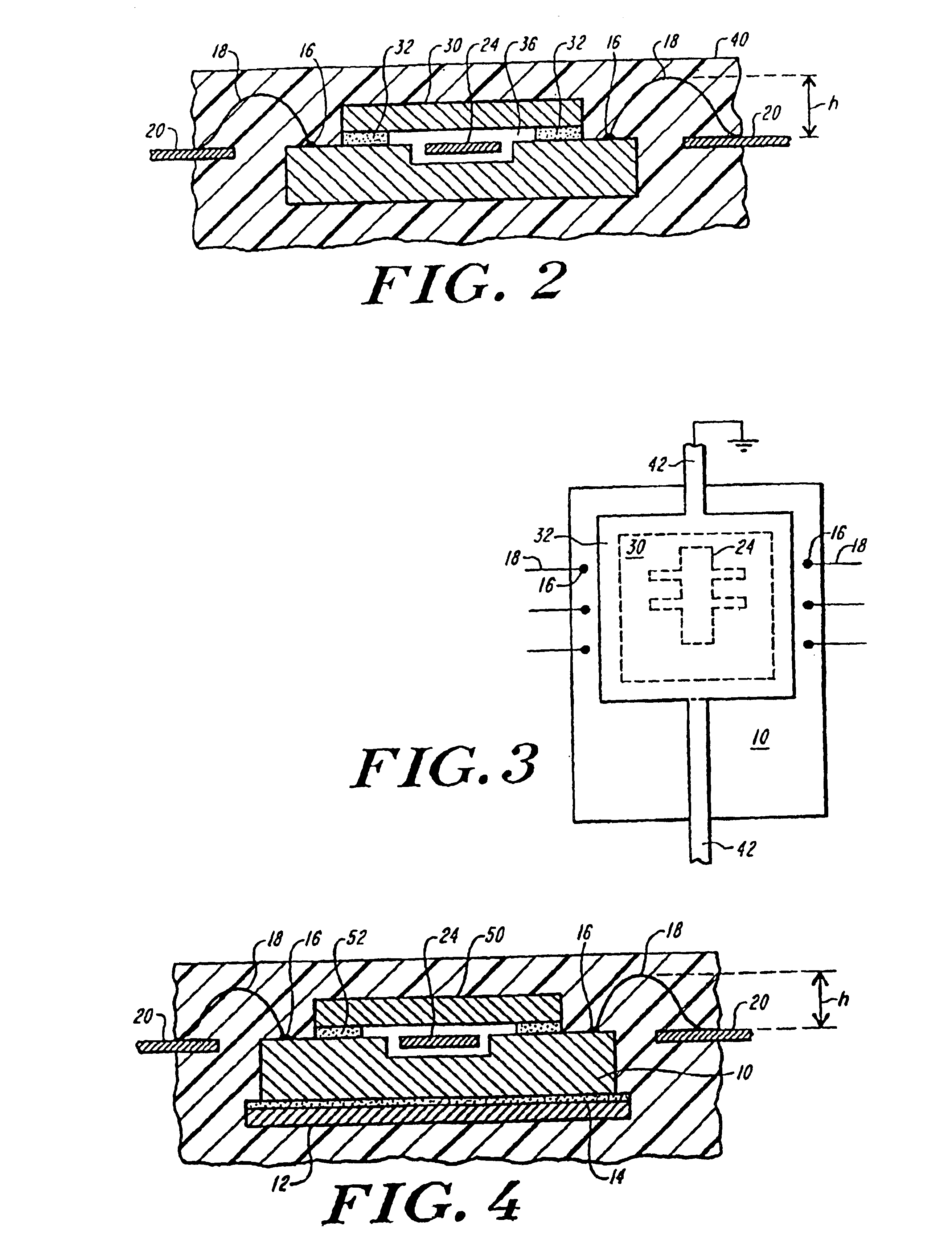Package for sealing an integrated circuit die
- Summary
- Abstract
- Description
- Claims
- Application Information
AI Technical Summary
Benefits of technology
Problems solved by technology
Method used
Image
Examples
first embodiment
[0022]Referring to FIG. 2, in the present invention, a paddle 30 is bonded over a face of chip 10 with an adhesive layer 32. Paddle 30 replaces the larger paddle 12 as shown in FIG. 1. Referring also to FIG. 3, paddle 30 has a perimeter that fully surrounds mass 24, but preferably does not block access to ballbonds 16. Typically, the area of paddle 30 is less than the area of the die.
[0023]Adhesive layer 32, in addition to bonding paddle 30 to chip 10, serves as a standoff to the die, thus defining between paddle 30 and mass 24 a void region 36 that prevents paddle 30 from contacting mass 24. A cutout region can be formed in the paddle, e.g., with chemical etching or stamping, to help create a larger void region. Preferably, the paddle is made of metal.
[0024]Preferably, the adhesive is organic, which tends to create less mechanical stress than an inorganic adhesive. An example of a thermoset, organic, non-conductive adhesive that can be used is Ablestik 660, available from Ablestik ...
third embodiment
[0034]Referring to FIGS. 6 and 7, in the present invention, a die 60 has a portion 62 to be protected, such as a sensor, formed in a face 64 of the die. Die 60 has a silicon substrate 70 and other various layers (not shown) with a top passivation layer 72, such as glass. A layer 74 of glass or metal is provided over top passivation layer 72 so that it surrounds portion 62. While this layer can include a number of different types of glasses or metals, it is preferred that this layer include a layer 76 of aluminum with an intermediate layer 78 to assist in bonding aluminum layer 76 to passivation layer 72. Intermediate layer 78 is preferably titanium tungsten.
[0035]A cap 80 has a silicon body 82 with a perimeter 88 that is coated with a layer 84 of glass or metal. While a number of different glasses and metals can be used, layer 84 is preferably made of gold. To form the hermetic seal, the cap is provided over the die and is heated to an appropriate temperature, preferably at least ab...
PUM
 Login to View More
Login to View More Abstract
Description
Claims
Application Information
 Login to View More
Login to View More - R&D
- Intellectual Property
- Life Sciences
- Materials
- Tech Scout
- Unparalleled Data Quality
- Higher Quality Content
- 60% Fewer Hallucinations
Browse by: Latest US Patents, China's latest patents, Technical Efficacy Thesaurus, Application Domain, Technology Topic, Popular Technical Reports.
© 2025 PatSnap. All rights reserved.Legal|Privacy policy|Modern Slavery Act Transparency Statement|Sitemap|About US| Contact US: help@patsnap.com



